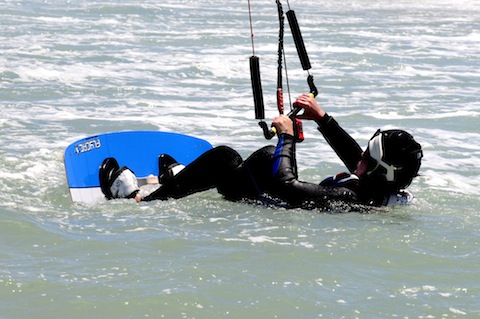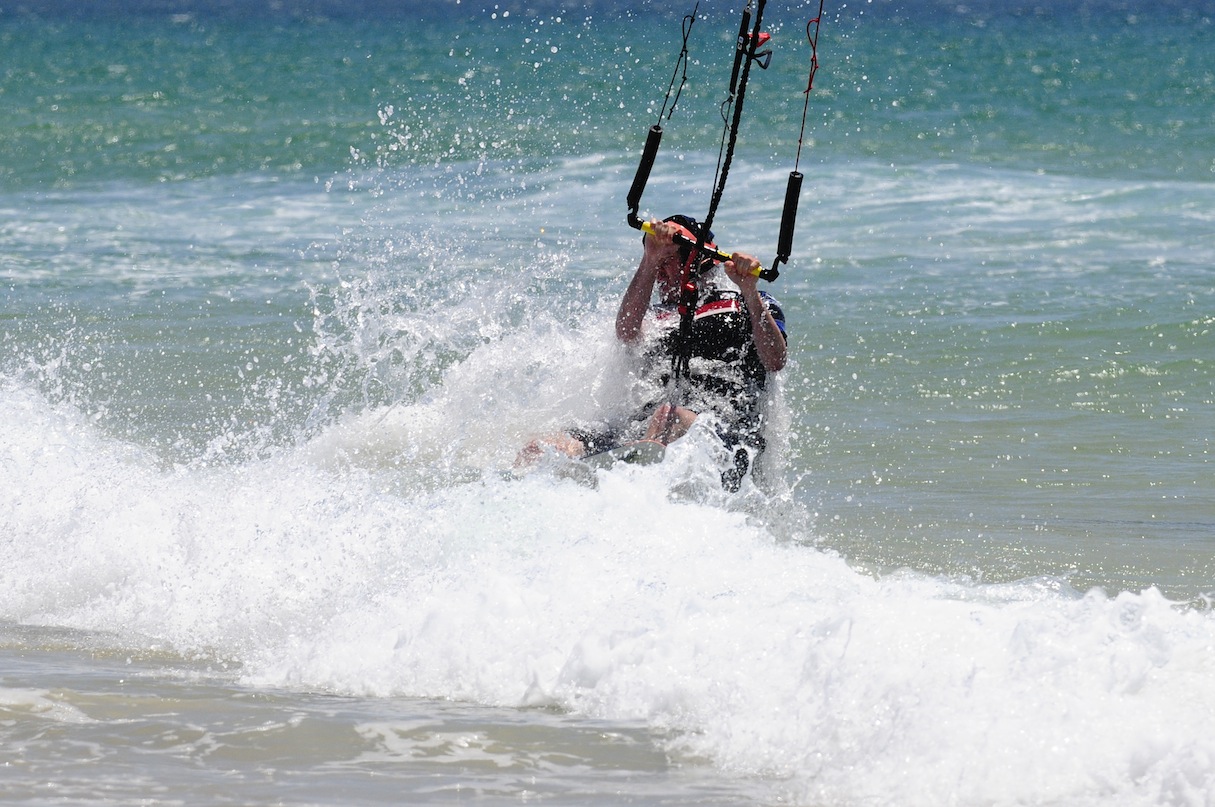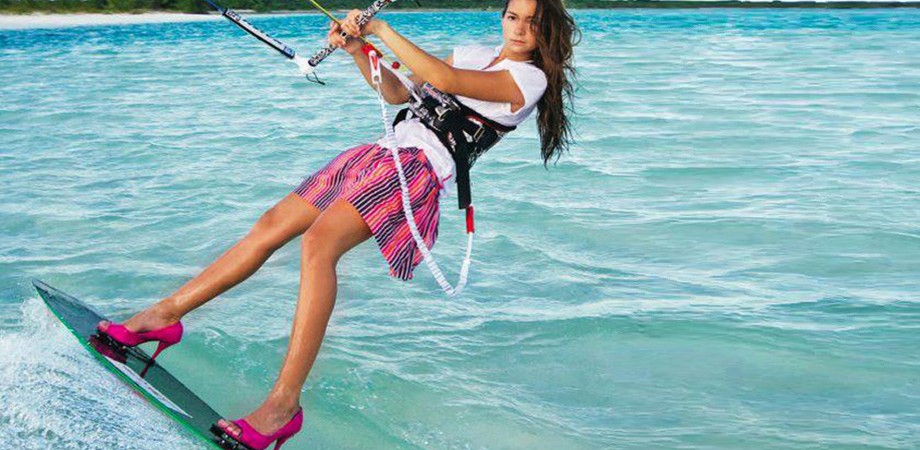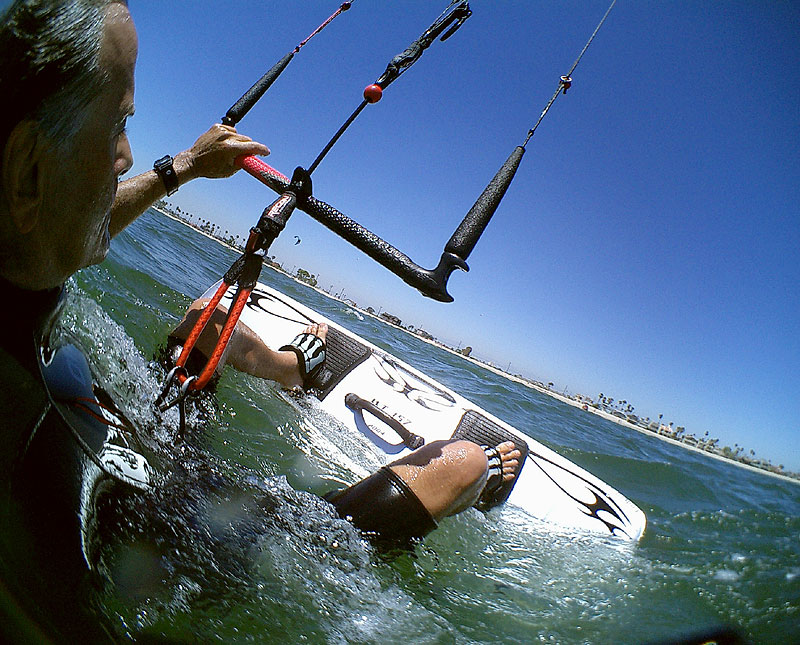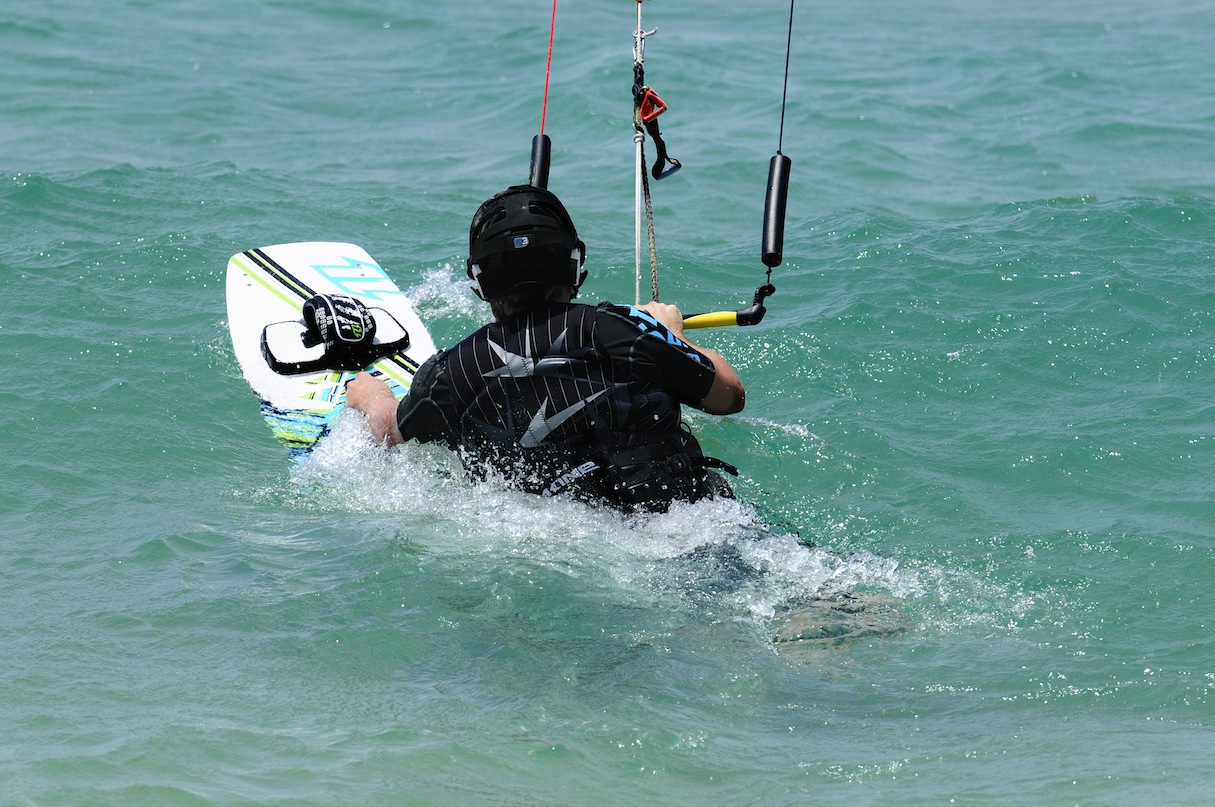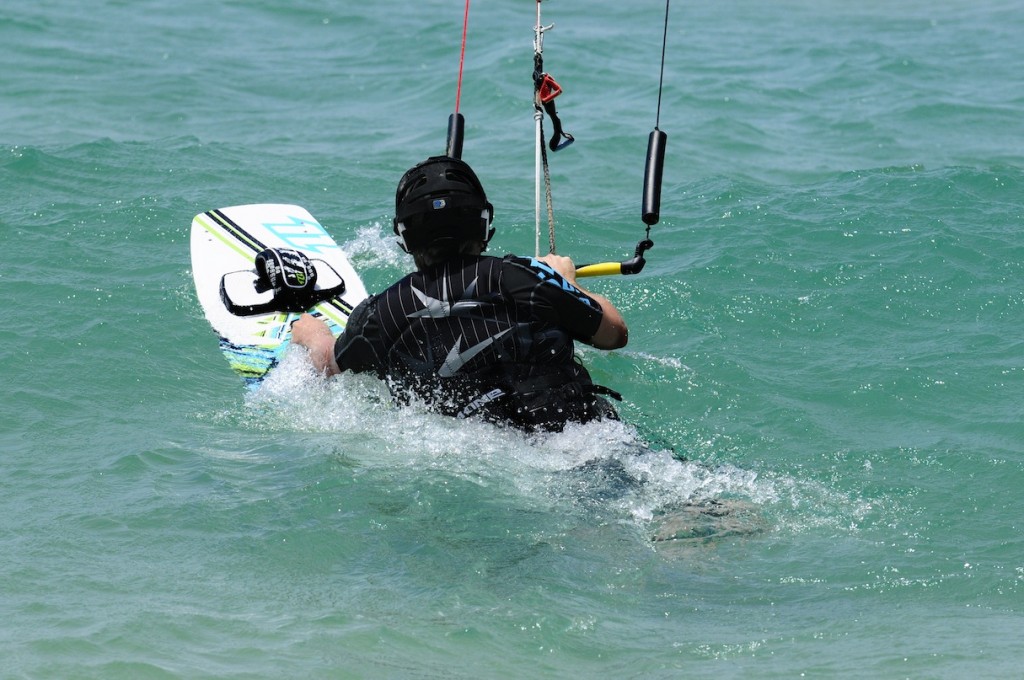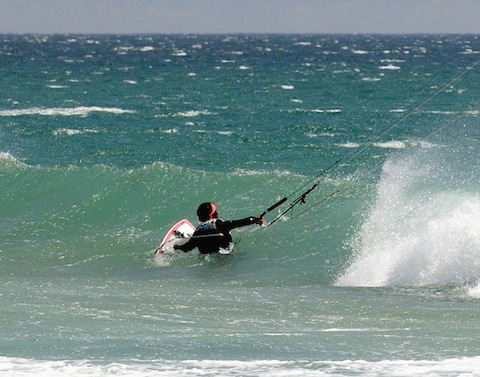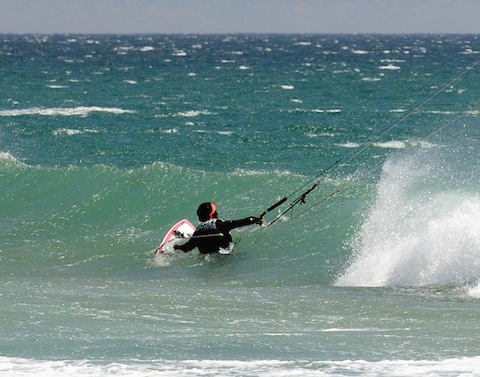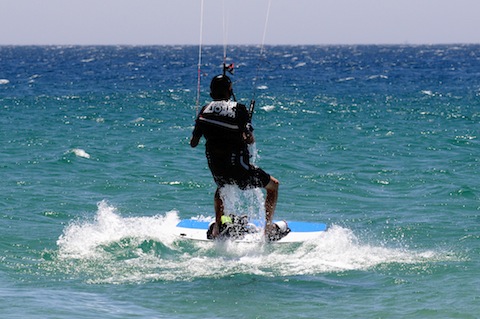
[vimeo height=”315″ width=”560″]http://vimeo.com/61011595[/vimeo]
Onto the water start. Now we’ve taking care of the kite (hopefully), it’s time to look at the board. As you rise out of the water you want to point to the board in the direction of the kite. What this effectively means is that the board is now offering no resistance to the kite, and your direction of travel should be exactly the same as the direction that the pull is coming from in the kite. This means you can start to ride albeit downwind, without needing tons of power in the kite. Normally speaking this will mean that the board is pointing roughly 45 degrees downwind as you rise up from the water but it could be as far round as 90 degrees.
It is a commonly held belief (erroneous in this case) that good kite surfers start to ride with their pointing across or even up wind. All kite surfers, irrespective of level, start to ride with the board pointing downwind. There is simply no other way to do it. What happens is that very quickly the better kite surfers transfer their weight turning the board as they do thus giving the appearance that they are coming out of the water already riding across or up wind.
There are several ways to achieve this pointing of the board downwind. The best way that I have found is to think of pulling your back leg further in towards your bum as you rise out of the water. This naturally angles the board to 45° and keeps your knees bent. Many people talk about straightening the front leg as you come out of the water and, while this works, we have found it tends to lead to people coming up with straight legs which leaves them with very little counterbalance and most people end up plopping straight over the front of the board.
During this stage you may often think you are pushing the border around to 45° whereas in reality the board is staying perpendicular to the wind. If you experience the sensation of the boards skidding sideways across the surface of the water with no grip it is most certainly the case. A good method to attempt to eradicate this habit is to pick spots that are at least 45° downwind of you before you start and ensure the board is aiming at them as you come out of the water, or look at angle of any chop and ensure your hitting it at the correct angle as you ride.

What often happens next is the student rises out of the water with the board pointed at 45° rides for a couple of metres and then loses all power and sinks back into the water. This is generally caused by pulling the bar in as you rise out of the water. As the kite reaches the bottom of the power stroke the bar is pulled all the way in (as as humans like to haul ourselves up on something, in this case the bar) and the kite simply stalls at this point, dumping you unceremoniously back into the water. There are several remedies for this. Fly the kite harder on the down stroke so there is no temptation to pull the bar in whatsoever…in fact you’ll be trying to ditch power by getting the bar out. If you combine this with a quick upstroke to take the kite back up to the top of the window you should have more success.
When bringing the kite back up to the top of the window ensure you keep the kite on the side of the wind window into which you are riding. Many people at this stage bring the kite up to 12 o’clock or beyond which simply pulls you up onto your toes or back in the opposite direction. Once riding the kite must remain on the side of the window into which your board is pointing.
